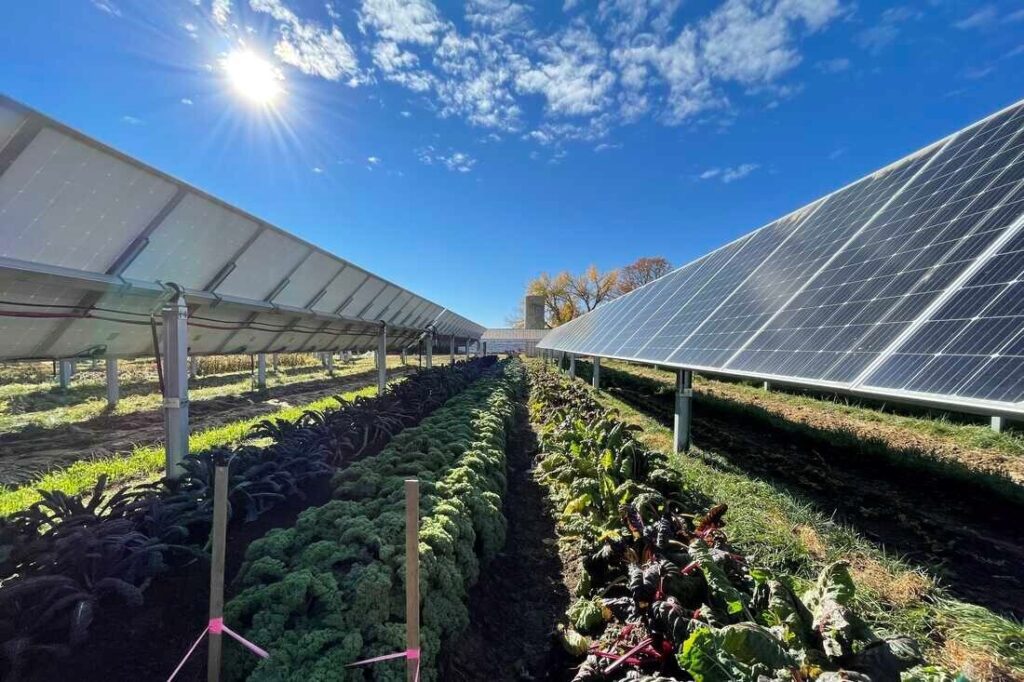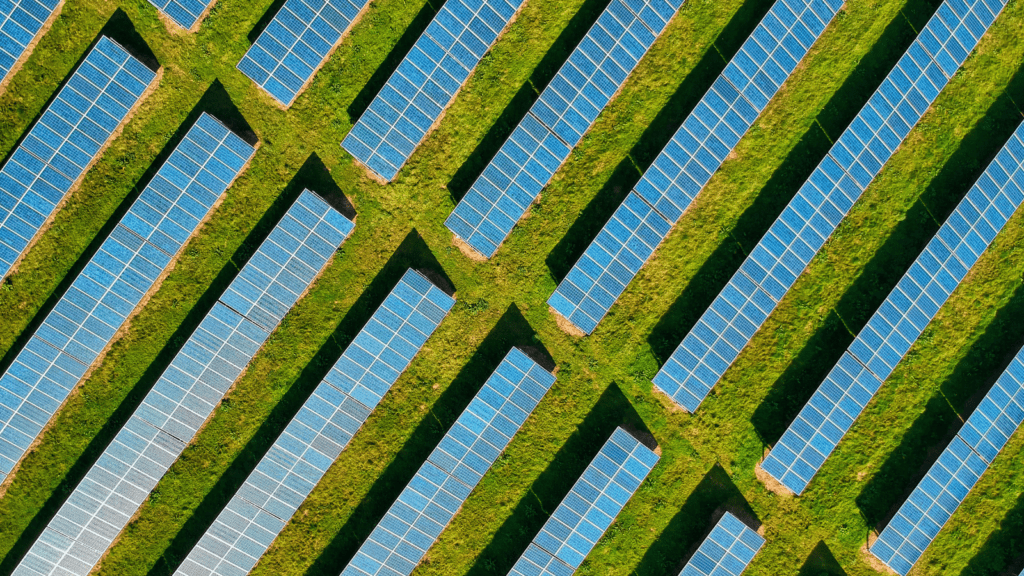Agrivoltaics is a system that combines agriculture and photovoltaic technology in the same land area. In simple terms, it refers to the practice of growing crops and plants beneath solar panels, where both can be produced simultaneously.
The concept of agrivoltaics has been around for several decades, but it has recently gained momentum as a sustainable solution to increasing food production and renewable energy. The integration of solar panels with agriculture has several advantages, including maximizing land use efficiency, reducing water consumption, and increasing crop yield.

One of the primary benefits of agrivoltaics is that it allows farmers to use the same land for both energy production and agriculture. This approach is beneficial for areas with limited land resources. For instance, in regions where water is scarce, agrivoltaic systems can help reduce water consumption by shading the crops underneath the solar panels. This provides an ideal climate that reduces water evaporation and helps crops retain moisture.
Another advantage of agrivoltaics is that it helps increase crop yield. The shade provided by the solar panels helps protect crops from extreme temperatures, which can negatively affect plant growth. Additionally, the shade provided by the solar panels creates a more stable climate that promotes photosynthesis, resulting in healthier plants and higher yields. The soil under the solar panels stays cooler, which reduces the incidence of pests and diseases that thrive in hot conditions.

Agrivoltaic systems also have the potential to generate renewable energy. The solar panels generate electricity that can be used on-site or sold back to the grid. This helps reduce the reliance on fossil fuels and contributes to the transition towards renewable energy sources. In some cases, agrivoltaic systems can even generate enough electricity to power the irrigation systems used to water the crops.
There are several challenges to the implementation of agrivoltaic systems. One of the primary challenges is the cost of installation. Agrivoltaic systems require specialized equipment and installation, which can be expensive. Additionally, the cost of maintaining the solar panels and ensuring the safety of the crops underneath them can be high.
Another challenge is the potential impact of shading on crop growth. While the shade provided by the solar panels can be beneficial for crop growth, it can also reduce the amount of sunlight reaching the crops. This can negatively affect some crops that require high levels of sunlight for optimal growth. Farmers need to carefully select crops that are compatible with the microclimate created by the solar panels.
Despite these challenges, agrivoltaics have the potential to provide a sustainable solution for increasing food production and renewable energy generation. The integration of agriculture and photovoltaic technology can help reduce the reliance on fossil fuels, increase crop yields, and maximize land use efficiency. As technology improves and costs decrease, it is likely that agrivoltaic systems will become more widely adopted, contributing to a more sustainable and resilient future.
Agrivoltaics is a promising solution for sustainable agriculture and renewable energy. It allows farmers to maximize land use and increase their revenue while reducing their carbon footprint. However, more research is needed to fully understand the potential benefits and challenges of agrivoltaics, and the optimal design and installation of photovoltaic systems.
We consider landowners to be our primary stakeholders at ESA. We have successfully established over 100 solar farms across the United States, providing landowners with a reliable and steady income. Our solar farms are constructed using our own funds, without any financial burden on landowners. We also ensure the property is insured, handle maintenance responsibilities, and cover any rise in property taxes. If you are interested in finding out more, check out our website and feel free to contact us, as agrivoltaics represents the future of farming!
Your future deserves to be powered by clean energy. Connect with our team and we will guide you through the clearest and most effective path to solar.